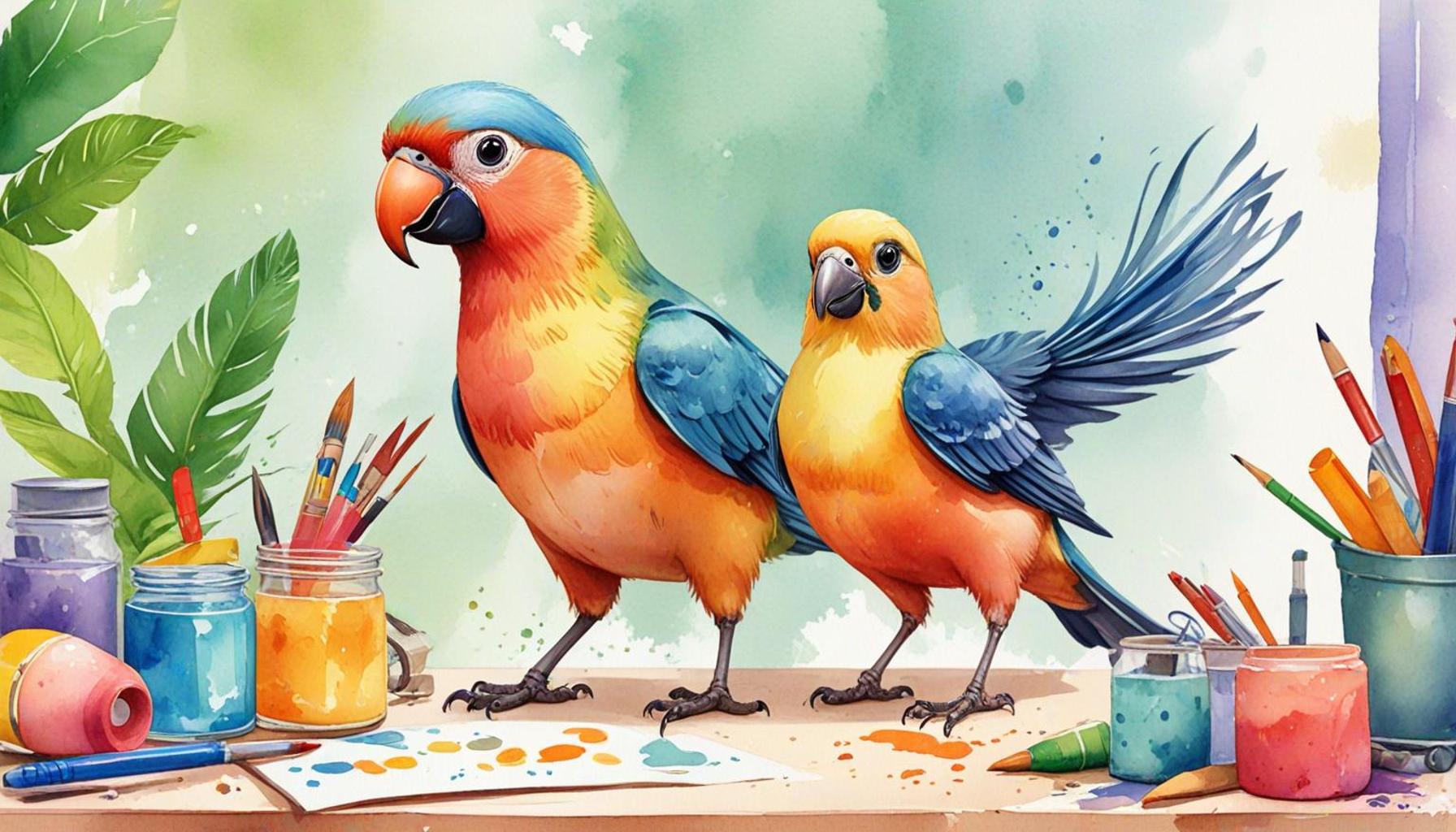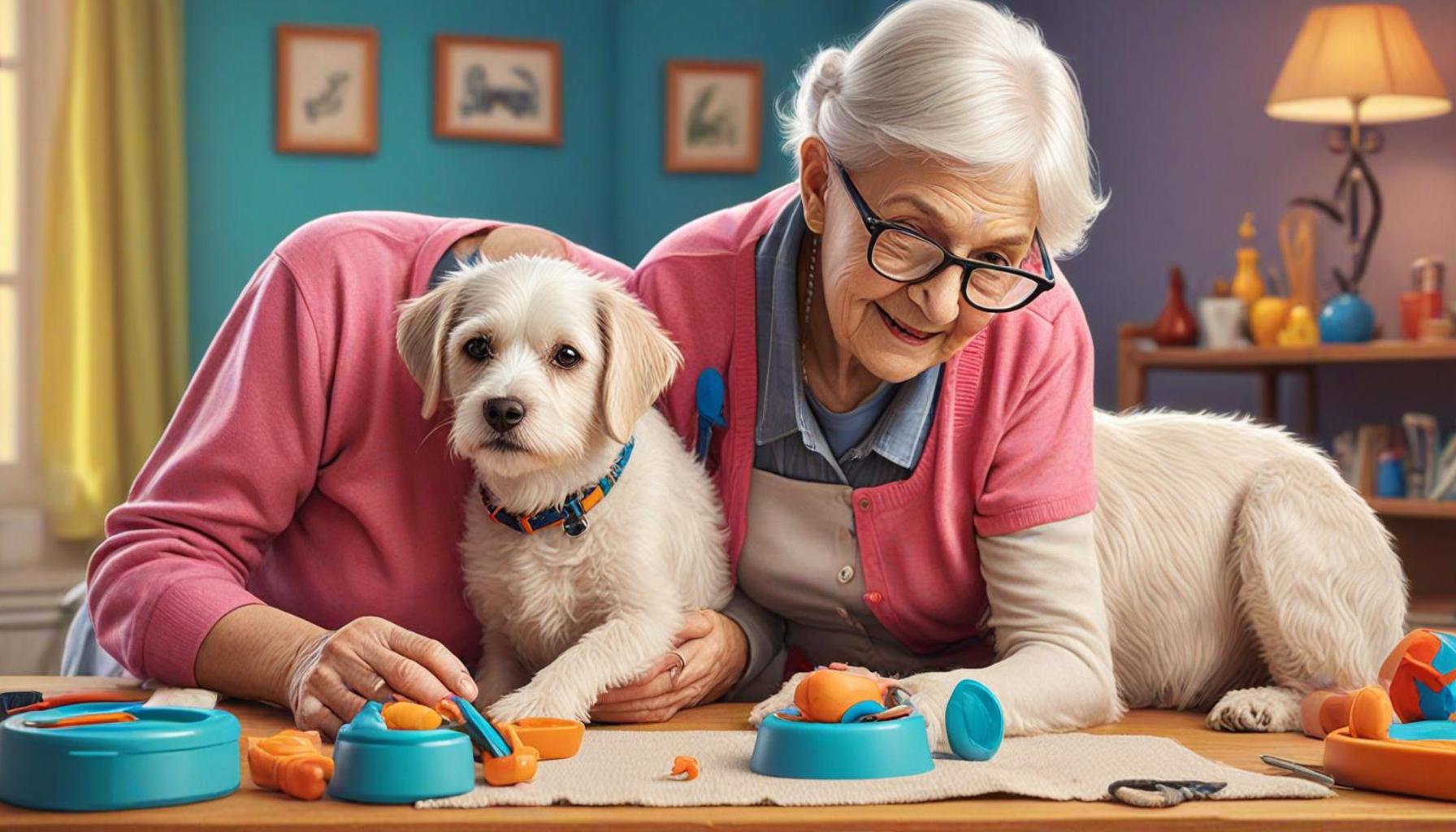Pet Bird Training: Tips for Teaching Tricks and Behaviors

Unlocking Your Pet Bird’s Potential
Training your pet bird can be a rewarding journey filled with bonding moments and surprises. Birds are intelligent creatures capable of learning a variety of tricks and behaviors that can enrich their lives and yours. Understanding the basics of bird training will help you connect with your feathery friend on a deeper level.
Why Train Your Pet Bird?
Training is not solely about teaching tricks; it comes with a multitude of practical benefits that can enhance both your life and that of your bird. Here are some compelling reasons to take the plunge into training:
- Enhances Communication: Through training, you establish a clear line of communication with your bird. Learning to understand your pet’s vocalizations and body language can lead to a more harmonious relationship.
- Encourages Mental Stimulation: Birds, like many intelligent creatures, require mental engagement. Regular training sessions with puzzles or target training prevent boredom and help stave off behavioral issues, keeping your pet mentally sharp.
- Strengthens Your Bond: Training sessions create an environment of trust and interaction, allowing you to deepen your relationship. The time spent together fosters a sense of companionship that enhances the emotional connection between you and your bird.
Key Considerations
Before diving headfirst into training, it’s important to consider several essential factors that contribute to effective learning:
- Understanding Bird Behavior: Recognizing your bird’s natural instincts is crucial for effective training. For instance, knowing whether your bird enjoys foraging or prefers interactive play can inform the types of training exercises you choose.
- Consistency is Key: Just like humans, birds thrive on routine. Implementing regular training sessions at the same time each day helps reinforce learning and keeps your bird engaged.
- Use Positive Reinforcement: Rewarding desired behaviors with treats, praise, or additional playtime encourages your bird to learn new skills actively. This positive approach is often more effective than any form of negative reinforcement.
As you embark on this exciting adventure, remember that patience and understanding go a long way. It’s essential to recognize that every bird has a unique personality; while some may pick up tricks quickly, others may take their time. The joy of watching your bird learn and master new skills can lead to years of companionship filled with playful interactions and impressive tricks.
For instance, a common pet bird in Nigeria, such as the African Grey Parrot, is known for its striking intelligence and ability to mimic sounds. Imagine the thrill of teaching your parrot to say a phrase in Yoruba or mimic local sounds, which can truly enhance your experience! As you explore this journey of training, consider incorporating aspects of your culture or environment, which not only makes training more relatable but also enriches your pet’s life.
By following these guidelines and immersing yourself in the world of bird training, you not only teach your pet useful skills but also foster a lifelong friendship that thrives on understanding and joyful companionship.
ADDITIONAL INSIGHTS: Expand your understanding here
Essential Techniques for Effective Bird Training
Equipped with a foundational understanding of why training is beneficial, the next step is to explore essential techniques that will make your bird training efforts successful. Each training session presents an opportunity to strengthen the bond between you and your feathered friend, so it’s vital to approach these sessions with creativity and patience.
Choosing the Right Environment
Creating the ideal training environment is central to the success of your pet bird’s education. A quiet space free from distractions—such as loud noises, other pets, or clutter—can help your bird focus on the task at hand. Here are some critical factors to consider for establishing a conducive training environment:
- Comfortable Setting: Ensure that your bird feels safe and secure. A familiar perch or play area can help make the training less intimidating and more enjoyable.
- Time of Day: Birds can have varying energy levels at different times, so it’s crucial to choose a time when your pet is most alert and willing to engage. Early morning or late afternoon are often ideal times for training sessions.
- Duration: Keep training sessions brief, ideally around 5 to 10 minutes. Birds tend to have short attention spans, so shorter, frequent sessions promote better learning outcomes without risking frustration.
Setting Realistic Goals
Before embarking on any training journey, it’s essential to set realistic and achievable goals tailored to your bird’s abilities. Think about what specific tricks or behaviors you want to teach and ensure they are suitable for your bird’s species and temperament. Popular tricks include:
- Step Up: Training your bird to step onto your finger or hand is a foundational skill that establishes trust.
- Wave: Teaching your bird to wave can be an engaging trick that also sharpens their coordination.
- Fetch: Encouraging your bird to retrieve small objects can offer both mental challenge and physical exercise.
When setting goals, it’s beneficial to break down complex tricks into smaller, manageable steps. This incremental approach ensures your bird progresses at its own pace and builds confidence with each success. For instance, if you’re teaching the “wave,” start by rewarding your bird for simply lifting its foot, gradually progressing to the full wave motion.
It’s also important to acknowledge that certain birds may learn more quickly than others. For example, African Grey Parrots, renowned for their intelligence, may master skills faster than budgerigars. Thus, tailoring your training approach based on your bird’s unique traits will make the experience more enjoyable for both of you.
Training is an artistic endeavor that demands a blend of strategy, patience, and observation. By ensuring the right environment and establishing clear goals, you’ll be well on your way to unlocking your bird’s potential, fostering an enriching partnership that is filled with fun and learning.
| Training Method | Key Features |
|---|---|
| Positive Reinforcement | Utilizes rewards such as treats or praise to encourage desired behaviors in pet birds. |
| Clicker Training | Involves using a clicker sound to mark the desired behavior, immediately followed by a reward, enhancing learning. |
| Modeling Behavior | Uses another bird or human to demonstrate tricks, leading to observational learning in your pet bird. |
Training your pet bird can be a fulfilling journey that enhances both their well-being and your bond. Positive reinforcement is a highly regarded technique known for its effectiveness and promotes a trusting relationship. By rewarding good behavior with treats or attention, owners find that their birds learn tricks and behaviors more readily. Additionally, the innovative clicker training method marks the exact moment a bird successfully executes a trick, using a sound to provide immediate feedback, which is crucial for effective learning. Moreover, modeling behavior can be a unique approach, allowing birds to learn from observing others, whether they are fellow birds or humans. These techniques not only teach tricks but also foster mental stimulation and enrich your bird’s life. Discovering which method resonates with your pet can lead to exciting results!
CHECK OUT: Click here to explore more
Reinforcement Techniques to Enhance Learning
Once the environment is optimal and realistic goals have been established, the focus shifts to reinforcement techniques that are crucial to successful pet bird training. These methods can significantly enhance your bird’s learning experience and willingness to engage in a myriad of tricks and behaviors.
Positive Reinforcement
The foundation of effective bird training is positive reinforcement. This technique involves rewarding your bird immediately after it performs the desired behavior. Rewards can include treats, verbal praise, or physical affection. Here are some steps to effectively apply positive reinforcement:
- Selecting Treats: Use high-value treats that your bird loves, such as millet seeds or small pieces of fruit. Reserve these special snacks exclusively for training sessions to keep your bird motivated.
- Timing is Key: Providing the reward immediately after your bird exhibits the desired behavior solidifies the connection between the action and the reward. This immediacy helps your bird understand exactly what it is being rewarded for.
- Consistent Cues: Pair the behavior with a consistent verbal cue or hand signal. For instance, saying “good bird” or using a distinct sound can help your bird associate the cue with the action.
Positive reinforcement not only motivates your bird but also cultivates a deeper emotional bond between you and your pet. Each successful interaction can build your bird’s confidence, making it more likely to attempt new tricks in the future.
Clicker Training
Clicker training is another innovative approach that has gained popularity among bird trainers. This method uses a clicker device to mark desired behaviors followed shortly by a reward. Here’s how to implement clicker training:
- Introducing the Clicker: Begin by simply clicking the device and immediately offering a treat. This action establishes a connection between the click sound and receiving a reward.
- Shaping Behavior: Gradually introduce the desired trick. For example, if teaching “turn around,” click the clicker when your bird begins to look in the direction of the turn. With time and patience, reward each incremental step towards the completion of the trick.
- Withholding Rewards: As your bird becomes more adept, start to withhold the treats for less frequent, more complex behaviors. This technique keeps the element of challenge alive and encourages your bird to strive for excellence.
Many bird owners in urban areas like Lagos have successfully utilized clicker training with their pets, citing improved responsiveness and engagement. This method offers a structured way of communicating with your bird while making the training sessions dynamic and interactive.
Social and Interactive Training
Birds are inherently social creatures, and leveraging their sociability can significantly enhance their training experience. Interactive training sessions not only encourage bonding but also provide ample mental stimulation:
- Group Training: If you have multiple birds, consider group training sessions. Observing one another can foster a healthy competitive spirit and boost learning rates.
- Incorporate Play: Engage with toys that emphasize the tricks you are teaching. For instance, if you’re working on the fetch command, use a toy that your bird can see and readily identify.
- Adjust Training Techniques: Tailor your methods to accommodate your bird’s social tendencies. Some birds thrive on interaction, while others may benefit from quieter, one-on-one training sessions.
By incorporating these reinforcement techniques into your training routine, you can create a more dynamic, engaging, and rewarding experience for both you and your pet bird. Whether you are teaching simple commands or elaborate tricks, the use of positive reinforcement, clicker training, and interactive engagement can transform your sessions into a joyful learning adventure.
LEARN MORE: This related article may interest you
Conclusion: Embrace the Joy of Pet Bird Training
In conclusion, pet bird training is not merely a way to teach your feathered friend a few fun tricks; it is a transformative journey that fosters a deeper connection between you and your avian companion. By employing techniques such as positive reinforcement, clicker training, and interactive sessions, you open the door to a world of shared experiences and enhanced communication. The importance of creating a comforting environment and setting realistic goals cannot be overlooked, as these factors lay the groundwork for a successful training experience.
As you embark on this rewarding adventure, remember that patience and consistency are your greatest allies. Every bird is unique; understanding and adjusting your techniques to suit your pet’s personality can significantly influence their willingness to learn. Engaging in group training with your friends’ birds or utilizing toys that align with your training goals can add an exciting element to the process.
For pet owners in Nigeria, fostering these training habits not only enriches the life of your bird but also enhances your lifestyle. The satisfaction of seeing your bird complete a trick or respond to commands is unparalleled. It transforms ordinary days into a tapestry of joy, laughter, and companionship. As you continue to refine your training methods, remember that the journey matters as much as the destination. Dive deeper into resources, share tips with fellow bird lovers, and enjoy the process of discovering what your remarkable pet can achieve.


